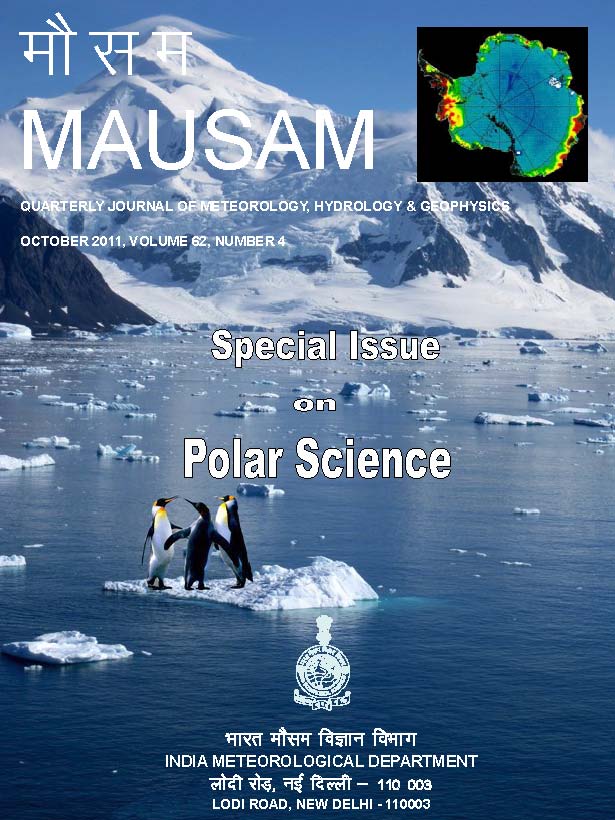Signature of ice melt over the Greenland derived from MSMR (OCEANSAT-1) data
DOI:
https://doi.org/10.54302/mausam.v62i4.380Abstract
In order to monitor the impact of global warming phenomena over the Polar Regions, it is necessary to monitor snow/ice melt on the Greenland and the Antarctic ice sheets. Using MSMR data, it is possible to differentiate sea ice at different concentration levels. On the basis of microwave emissivities of continental ice and sea ice, useful information on the formation and melting of the ice can be derived.
The paper discusses different strategies to derive a melt signal from the MSMR observations for the continental ice sheets in Greenland. The Polarization Difference (PD) for 21 GHz, available from MSMR data, is studied and an appropriate threshold is selected to detect the presence of melt signal. The results of the present study have bearing on climate changes.
Downloads
Published
How to Cite
Issue
Section
License
Copyright (c) 2021 MAUSAM

This work is licensed under a Creative Commons Attribution-NonCommercial 4.0 International License.
All articles published by MAUSAM are licensed under the Creative Commons Attribution 4.0 International License. This permits anyone.
Anyone is free:
- To Share - to copy, distribute and transmit the work
- To Remix - to adapt the work.
Under the following conditions:
- Share - copy and redistribute the material in any medium or format
- Adapt - remix, transform, and build upon the material for any purpose, even
commercially.



